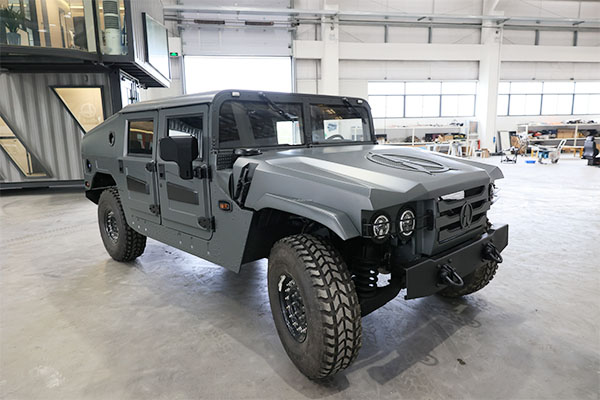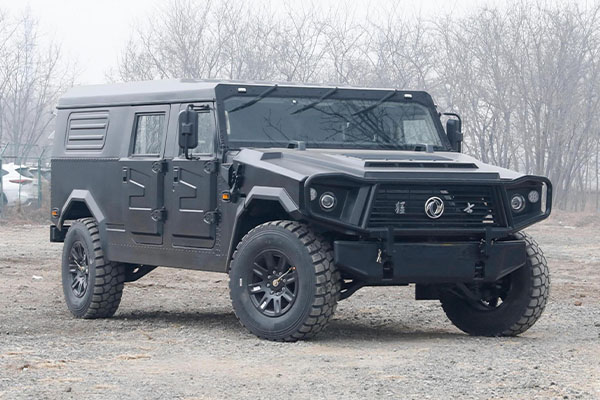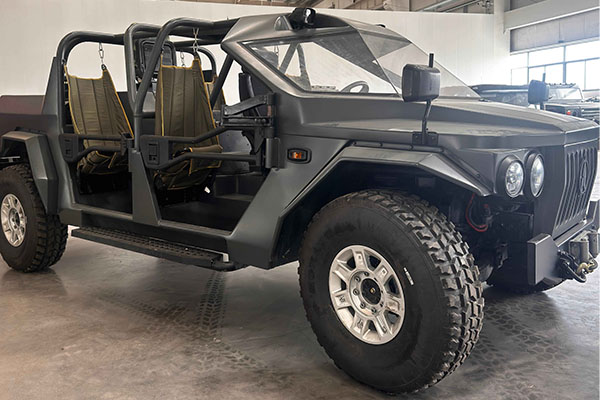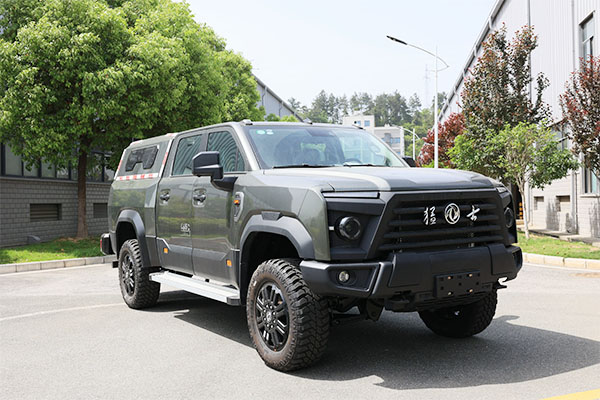How can the torsional rigidity of the non-load-bearing body of a high-performance all-terrain off-road vehicle be quantitatively improved?
Release Time : 2025-09-29
The independent body structure of a high-performance all-terrain off-road vehicle (HOTAV) is centered around an independent frame. Its torsional stiffness directly impacts the vehicle's stability and durability under complex road conditions. Improving torsional stiffness lies in optimizing the frame's geometry, material selection, and joining processes, while balancing lightweighting and strength requirements to meet the vehicle's adaptability to extreme road conditions.
Frame geometry is fundamental to torsional stiffness. The frame of an independent body typically utilizes a side-beam structure, consisting of longitudinal and transverse beams welded or riveted together to form a closed framework. The cross-sectional shape of the longitudinal beams plays a decisive role in torsional performance. Trapezoidal or box-shaped cross-sections significantly outperform open channel cross-sections because they distribute torsional stress. Cross-beam layout is also crucial. Densely distributed and symmetrical cross-beams minimize frame deformation during torsional conditions. For example, adding a reinforcing cross-beam in the center of the frame effectively suppresses frame twisting under cross-axle conditions. Furthermore, the frame's torsional center must be located close to the vehicle's center of gravity to reduce inertial resistance during torsional rotation and avoid additional stress concentration caused by a shifted center of gravity.
Material upgrading is a direct means of improving torsional rigidity. High-strength steel, due to its high yield strength and good ductility, is the mainstream material for vehicle frames. By locally employing hot-formed steel or boron steel, a balance between torsional rigidity and weight can be achieved in critical areas. For example, hot-formed steel is used in the A/B-pillar areas of the frame rails, allowing for significant impact resistance while reducing material thickness and weight. Although aluminum alloy is lighter, it is more expensive and difficult to process, and is typically used in non-critical components of high-end, high-performance all-terrain off-road vehicles, such as engine bay brackets. Composite materials, such as carbon fiber, offer extremely high specific strength, but are currently primarily used in racing or limited-edition vehicles due to cost and maintainability constraints.
Optimizing the joining process is crucial to overall rigidity. Welding, due to its high strength and proven process, is the mainstream method for joining vehicle frames. Laser welding can improve weld fatigue life by reducing the heat-affected zone. Friction stir welding, with its spatter-free and minimal deformation characteristics, is suitable for joining complex structures. Riveting, due to its removable nature, is often used in areas requiring frequent repairs or modifications, but its stiffness is slightly lower than welding. Adhesive bonding can reduce stress concentrations by filling gaps with structural adhesives, but it must be used in conjunction with mechanical connections to ensure reliability.
Local reinforcement is a supplementary method for improving torsional rigidity. Adding reinforcement plates or ribs to stress-concentrated areas of the vehicle frame, such as suspension mounting points and differential housing connections, can significantly improve local rigidity. For example, welding triangular reinforcement plates at the junction of the frame's longitudinal and transverse rails can distribute torsional stress over a larger area, reducing the risk of cracking. Furthermore, the method of attachment of the frame to the body also affects overall rigidity. Using multi-point rubber bushings or hydraulic bushings can absorb vibration while maintaining structural rigidity.
Improving the torsional rigidity of high-performance all-terrain off-road vehicles also requires consideration of adaptability to multiple operating conditions. When climbing rocks or traversing muddy terrain, the vehicle frame must withstand significant unidirectional or bidirectional torque. Therefore, finite element analysis is required to simulate these extreme conditions and optimize the frame's stress distribution. For example, adding a diagonal brace to the front frame can improve the torsional resistance of the front axle, while a double-layer crossbeam design at the rear enhances rear axle stability.
Quantifying torsional stiffness requires verification through actual vehicle testing. Static torsion testing involves fixing one end of the frame, applying torque, and measuring the deformation at the other end to determine the torsional stiffness coefficient. Dynamic road testing simulates the actual use of a high-performance all-terrain off-road vehicle, measuring the fatigue life of the frame under conditions such as bumps and roll. Through continuous optimization of design, materials, and processes, the torsional stiffness of the non-load-bearing body of a high-performance all-terrain off-road vehicle is continuously improved.







